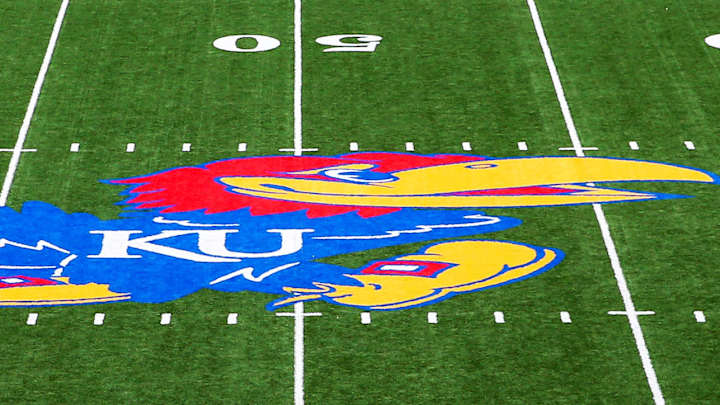Explaining Title IX and how sexual assaults are prosecuted on college campuses

Several institutions have tried to take a proactive stance when it comes to sexual assault education and prevention on college campuses. The results are mixed, and in the case of former Kansas rowers Daisy Tackett and Sarah McClure, they can be troubling.
The United States Department of Education is responsible for overseeing more than 7,000 post-secondary institutions, servicing the needs of more than 80 million students. The department’s Title IX law was established more than four decades ago as a breakthrough in gender equality in college sports, as women had not been afforded the same opportunities to compete at the highest level as their male counterparts.
The Department of Education’s Office for Civil Rights (OCR) headquartered in Washington, DC, is charged with enforcing various civil rights, disability laws, education, age discrimination and to “foster educational excellence and ensure equal access by enforcing federal civil rights laws and implementing regulations that prohibit discrimination on the basis of race, color, national origin, sex, disability, and age in all programs or activities that receive federal financial assistance.”
According to the statutes of Title IX of the Education Amendments of 1972, 20 U.S.C. § 1681(a), a school that receives federal funds violates Title IX and is subject to a private action for damages where the school is “deliberately indifferent” to known acts of discrimination against students.
Any school that refuses to address the problems identified by sexual assault or any other issue could lose federal funding or be referred to the U.S. Department of Justice for further disciplinary action. The Department of Education explicitly warned institutions that they must investigate any claims of sexual misconduct on campus, regardless of if a criminal investigation has not reached a conclusion.
But to this day, DOE has never taken away federal funds from any school involved in sexual assault or harassment cases since Title IX was signed into law in 1972. In the past 30 years, the number of complaints filed to the OCR has gone up nearly 80%. For example, in the fiscal year 2013–14, the last year the department has statistics on, nearly 30% of the complaints were sexual related.
In an effort to be transparent, the Dept. of Ed. released an initial list in May 2014 of 55 schools that were currently under investigation for possible violations of federal law over the handling of sexual violence and harassment complaints on campuses; today, there are more than 281 open cases involving 215 schools that are waiting for a resolution.
The list includes investigations opened because of complaints received by OCR and those initiated by the OCR as compliance reviews.
“On why there is a higher volume of complaints coming in, I think there is more public awareness about the issue and also more confidence from survivors that we will be there for them,” says Catherine Lhamon, the Assistant Secretary for Civil Rights at the Department of Education.
Lhamon says the department has received more than 10,000 complaints across all jurisdictions.
Some investigations have taken as long as three years to probe and for the handful of schools that have been found negligent in the way that they handle sexual assault response, such as Louisiana State, Ohio State, Virginia and most recently Wesley College, the only punishment is that those schools have to come into compliance with the federal mandate or address any concerns that were brought in a resolution letter.
The Department of Education has the ability to take away federal funds from institutions if they see fit, but Lhamon says that would only apply when schools don’t cooperate and that rarely happens.
“It’s nice when you carry the big stick of the federal government,” Lhamon says. “On why there is a higher volume of complaints coming in, I think there is more public awareness about the issue and also more confidence from survivors that we will be there for them.”
Anyone can make a complaint to the OCR in terms of their concerns with sexual assault responses from a school or lack thereof. The OCR doesn’t initiate complaints even if there are stories that have been made public. “So to be clear, we don’t have discretion to pick and choose which cases to open. We have a higher volume of complaints coming in as far as schools under investigation,” she says.
That’s why Baylor University, which been in the news about rampant sexual assault on campus concerning student athletes for the better part of the past three years, was only added this week to the OCR’s list of schools that are under investigation.
An Education Department spokesman confirmed that Baylor University had never been included on a Title IX sexual violence investigation list until now.
The advent of social media and awareness of the issue have been put in the forefront and the schools charged with educating students are in the crosshairs. Lawsuits at Tennessee, Baylor, Kansas, and a dozen other schools as well as the high profile case involving Stanford swimmer Brock Turner have pressured school administrators and government officials to step up their actions on awareness and prevention.
“Our process is that we investigate to determine whether we have concerns, whether we find a violation. If we do find a violation, we communicate that to the school, and we invite the school to tell us what it will do to address it going forward so we can insure that it won’t happen again, and will be in a period of monitoring,” Lhamon said. “If we can reach agreement for what they will do, they get to keep their funds and we monitor what they’ve said they will do and we ensure that they fully satisfy the law.”
Each school under the Department of Education’s jurisdiction is required to have a Title IX coordinator; each school law enforcement agency must submit a Clery Act report. The Jeanne Clery Act of 1990, like Title IX, is a federal statute, requiring schools by law to submit crime statistics to the DOE by Oct. 1 every year.
For the last year reported in 2014, the University of Kansas reported 14 rapes on campus, 10 of those happening in on-campus housing, which is third highest in the Big 12.
According to U.S. Department of Education’s Campus Safe and Security website, of the nearly 4,000 schools that have enrollments of over 250 students, roughly three-quarters of those schools did not report a single rape for the period ending Oct. 1, 2014.
By comparison, the Big 12 conference institution with the highest enrollment, Texas, reported 48 rapes during the same time period. Texas has nearly twice the enrollment size of Kansas. Texas A&M, which has the highest enrollment of any school listed on the Clery Report at 58,000 students, reported nine sexual assaults.
This does not tell the entire story. Many sexual assaults go unreported for various reasons.
Still more than 60% percent of rapes are unreported, according to the National Crime Victimization Study and women 18–24 who are enrolled in college are three times more likely than women in general to suffer from sexual violence. Females of the same age who are not enrolled in college are four times more likely (Bureau of Justice Statistics, Office of Justice Programs, Department of Justice. Rape and Sexual Victimization Among College-Aged Females, 1995–2013. 2014)
Tackett and McClure say the court system and dealing campus administrators is to blame more than anything. Their alleged attacker was still on campus more than a year and a half after allegedly assaulting McClure before he was expelled from Kansas.
Every school runs their Title IX department how they see fit, under the eye of the DOE, which may not be the best solution to the problem.
Nancy Hogshead-Makar, who won three gold medals in swimming at the 1984 Summer Olympics, is a legal advocate and CEO of Champion Women, based in Jacksonville, Fla. She says the issue of sexual assault is not as simple as understanding the laws of Title IX.
She says in areas where there are disagreements about Title IX, there are bound to be problems.
“The issue was in the past that schools were not disciplining students for sexual assault. Period.” said Hogshead-Makar, who was sexually assaulted as an undergraduate at Duke. “To have now, someone saying ‘Hey school, we want you to take on this responsibility, to do what you should have been doing 44 years ago. We want you to run investigations, the same you would do if it were plagiarism, the same way you would do it if it were a bomb threat. It’s long overdue.”
She says it falls on the schools to make sure and to be clear about what their procedures are when it comes to assault on campus, because before changes in laws, all of the cost and burden on dealing with sexual assault fell squarely on the woman.
“Now we are saying, that, no, no, no, we’re going to do more to make sure that sexual violence does not prevent a woman from being able to get her education,” Hogshead-Makar said.
Every institution has set guidelines and processes of reporting sexual assault, but there are certainly challenges. Mainly the culture and climate of the school and whether that school is training students in where to go after they have been assaulted.
Lhamon says she is frustrated. As she sat in her Washington, D.C. office during an interview with SI.com, she said she couldn't help but to think about the women who are suffering every day.
When asked what would she tell the survivors of sexual assault and their loved ones who are concerned about them and how they are treated once a complaint of assault is made:
“We’re here for you. It’s critically important to me that our full school communities understand that we are very serious about enforcing all of the federal civil rights laws that we can enforce. This is not a new phenomenon, this is not something that we are just now trying to figure out, this is something that has been the law for many decades and that it is well past time for our schools to come into full compliance with the law.
“And to understand that part of their educational mission is to ensure that all the students that they welcome on their campus actually feel welcome and are able to learn in school,” Lhamon adds.
Lhamon admits there are issues that come along with her job, specifically being under budgeted and understaffed, where investigations are not looked at or completed in a timely fashion.
“The hardest part for me is knowing the students that we are not serving and the places that we can’t get to,” she says. “I feel a lot of challenge about the volume of civil rights harm that takes place around the country and knowing that with the dedicated staff I have who I believe in and who I cherish getting the chance to get to work with, that we don’t have enough of us to be able to be where every student needs us to be."
